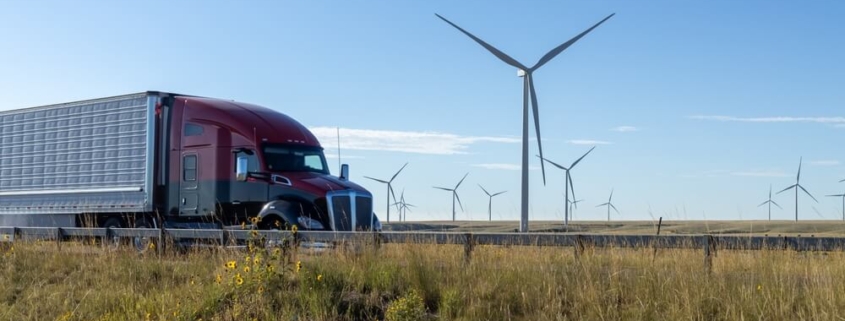What Wind Speeds Are Dangerous for Semi-Trucks?
Any shift in weather conditions can make a truck driver’s job far more challenging. This is especially true when a driver is facing high wind speeds that force them to drive more defensively, slow down, or even consider getting off the road completely. While most passenger vehicles can handle moderate wind speeds with a little bit of careful driving and slowing down, truck drivers have to be much more cautious.
Find out more about how high-speed winds can affect a truck and put you at risk of an accident. If you’ve been injured in a truck accident, call Bailey Javins & Carter at 800-497-0234.
Why Are High-Speed Winds So Dangerous?
Semi-trucks have a much higher center of gravity than passenger vehicles. High-speed winds hitting the side of a passenger vehicle may push them into the next lane, which is dangerous in its own right, but high-speed winds hitting the side of a semi-truck.
This could cause a rollover, which can spiral into many other dangerous situations. If a truck rolls over while carrying hazardous chemicals, there’s a serious risk that the chemicals will leak onto the highway. At that point, an explosion could happen at any point if the chemicals destabilize or come into contact with other substances.
A truck could also roll over onto other vehicles in the neighboring lane, a situation that often causes fatalities and severe injuries. Should the truck roll over into empty traffic, there’s no one at immediate risk of injuries. However, this situation often secondary crashes as other cars try to avoid the semi and hit the truck or other vehicles. Secondary accidents and highway closures can cause significant damage.
Moderately High-Speed Winds Can Be Risky
Truck drivers often start to struggle with the wind when it gets close to or exceeds 40 miles per hour. While a truck is unlikely to tip over at this speed, a driver will likely struggle to keep the vehicle in its own lane and avoid fishtailing. A loss of control could cause a jackknife accident.
The actual wind speed at which a truck driver struggles to maintain control depends a lot on how the truck is loaded. A fully loaded truck is less likely to roll over than a half-empty one, and a half-empty one is susceptible to rolling over at a much lower speed.
Watch Out for Wind That Can Flip a Truck
If truck drivers should start being extra cautious as winds approach 40 miles per hour, at what point is a rollover a serious possibility? In general, wind speeds of 60 miles per hour or higher are when rollovers are a real concern. Not only does this speed increase the chance of a rollover, but it also makes it far harder for drivers of passenger vehicles to maintain control. The likelihood of a crash caused by both parties is substantially higher at such high wind speeds.
Wind Direction is a Factor
While wind speed is an important factor in terms of rollover risk, wind direction is also a big piece of the puzzle. Headwinds are hard to push through and may cause a significant drop in travel speed, but they are less likely to cause a rollover. Wind from either side or angling in from either side is a much bigger danger when you’re worried about rollover accidents.
Preventing Accidents in Windy Weather
Both truck and passenger vehicle drivers should be aware of the weather before starting a trip. If a truck driver notices that high wind speeds are on the forecast, they should have a plan in place—at what point will they take a break and call dispatch for guidance? At what point will they decide it’s too dangerous to stay on the road and pull over to a rest stop? Knowing your limits is a key part of staying safe on the road.
Hurt in a Truck Accident? Call Bailey Javins & Carter
If you’ve suffered injuries in a truck accident, we understand how overwhelmed you must be right now. Our team is committed to helping you pursue the compensation you’re owed. Set up a consultation with our Atlanta team now by reaching out online or calling us at 800-497-0234

 Tractor Trailers and heavy winds
Tractor Trailers and heavy winds

 Insurance Adjusters misrepresenting your account of an accident
Insurance Adjusters misrepresenting your account of an accident